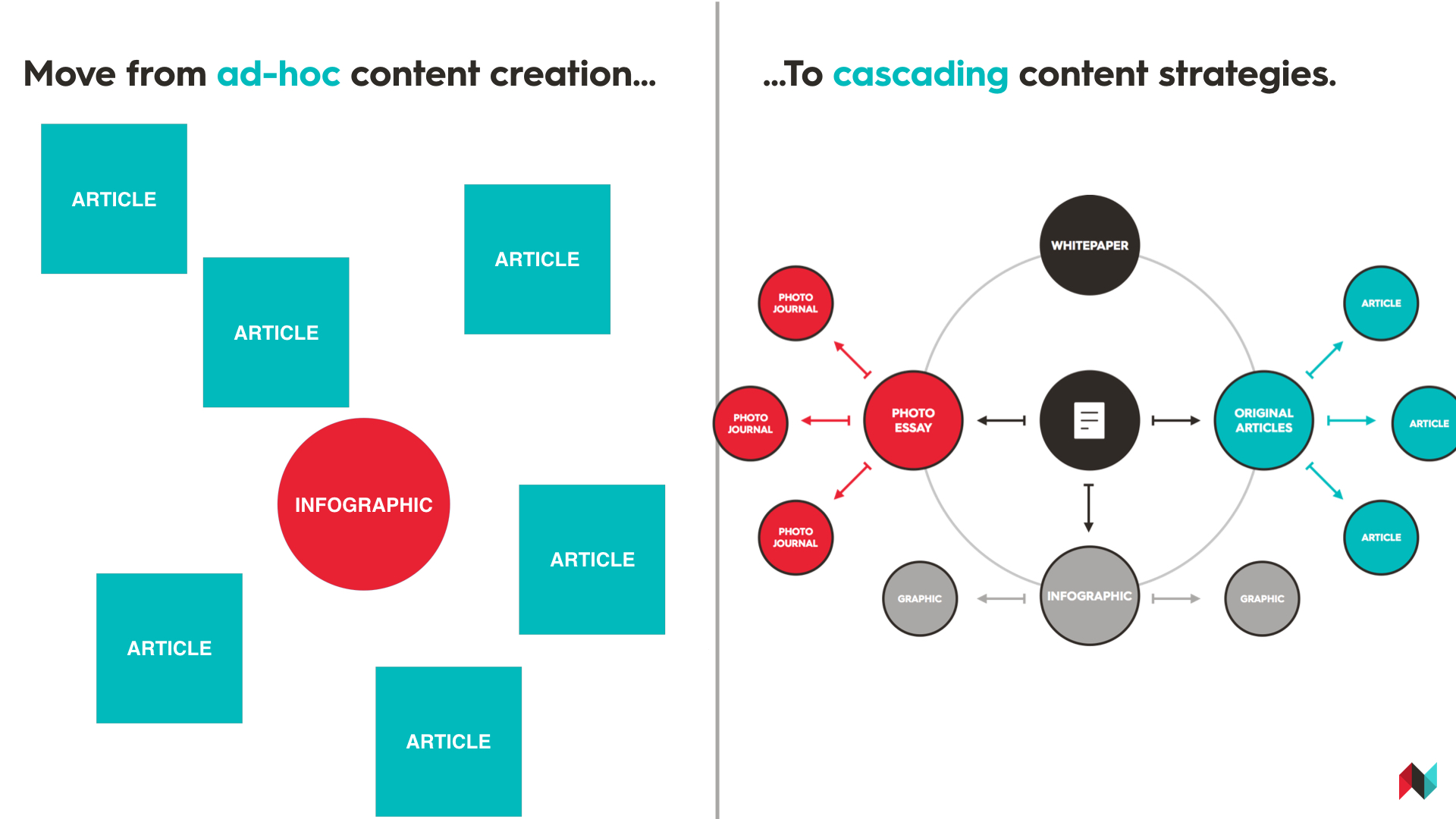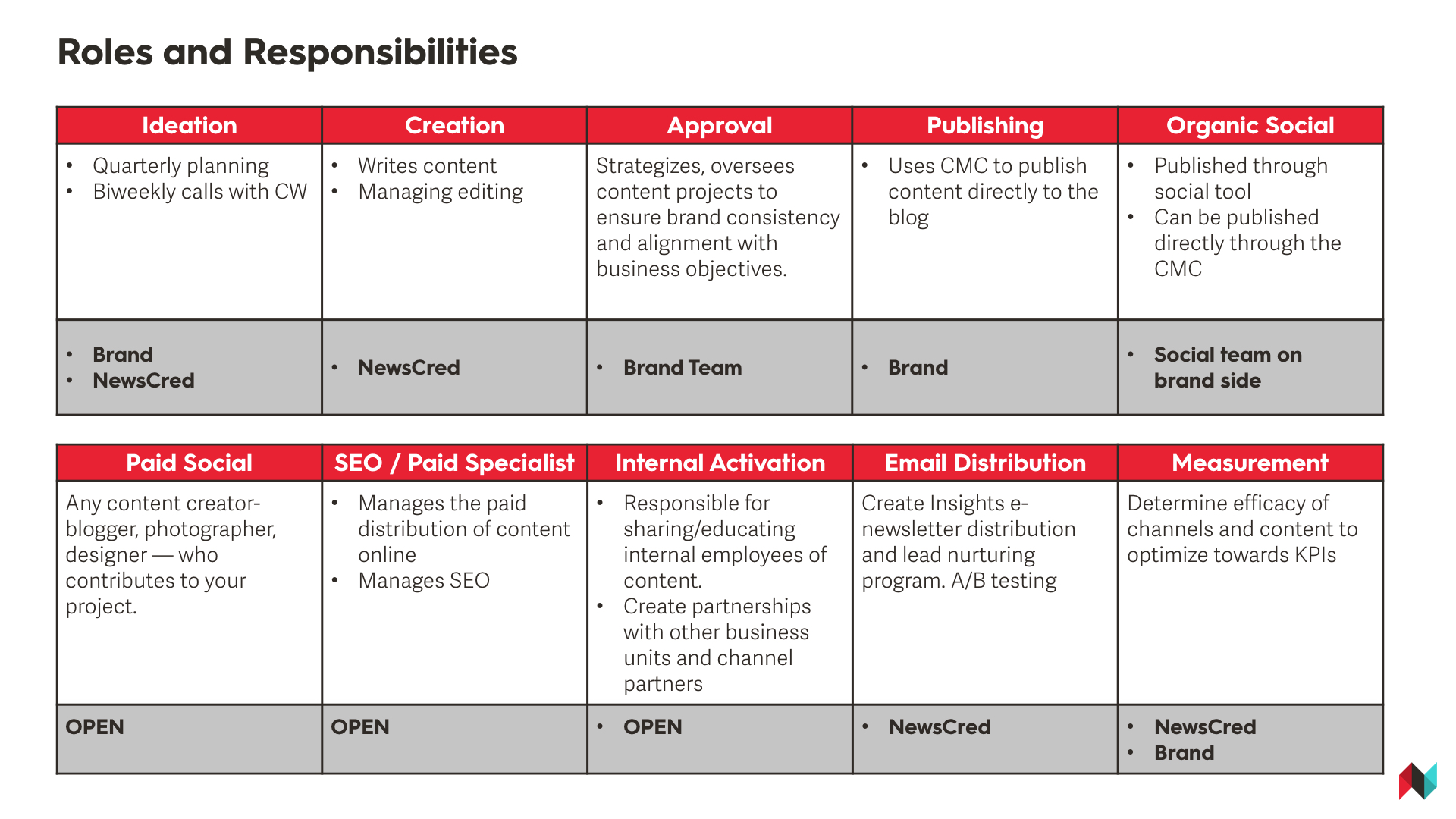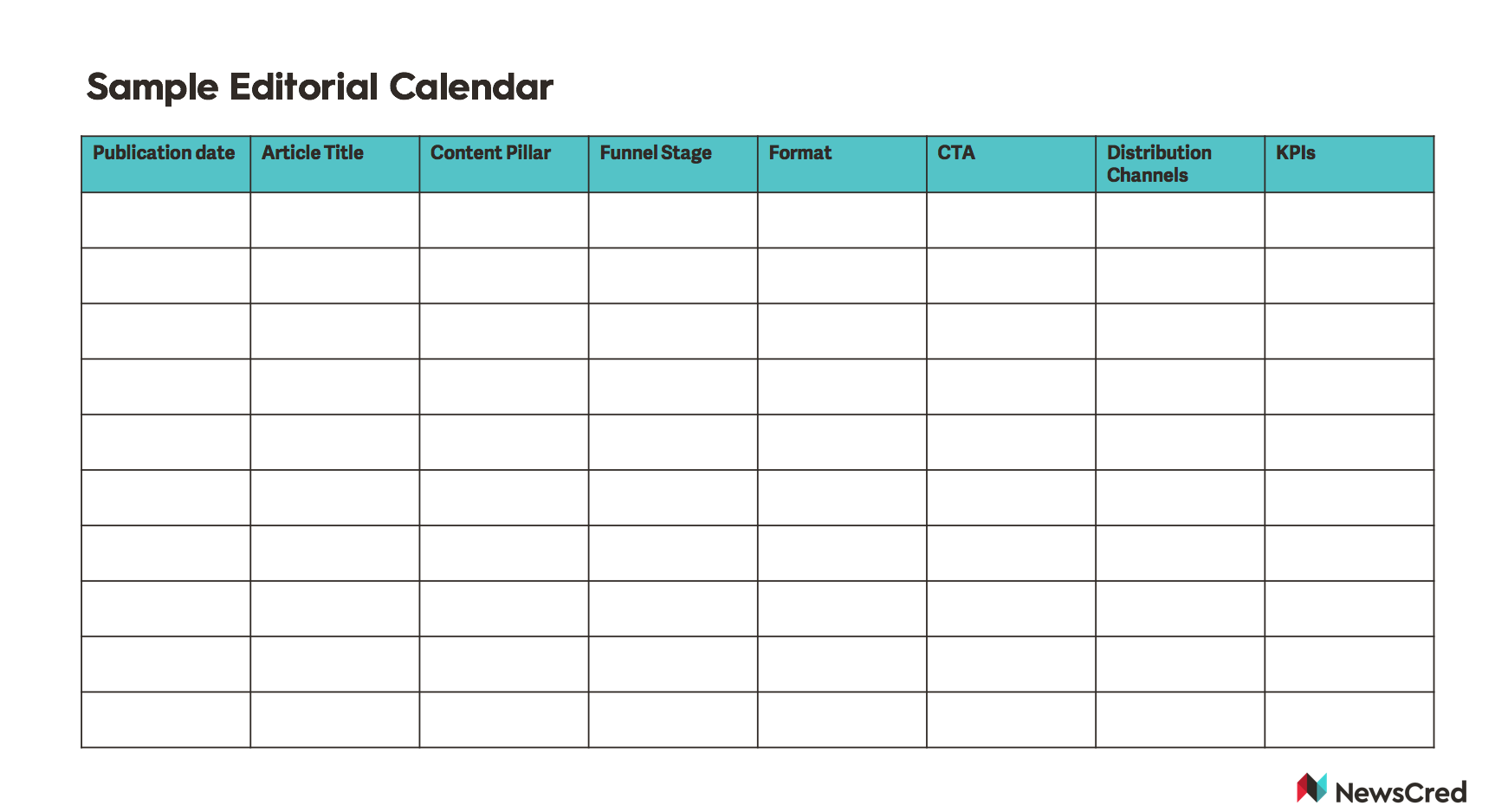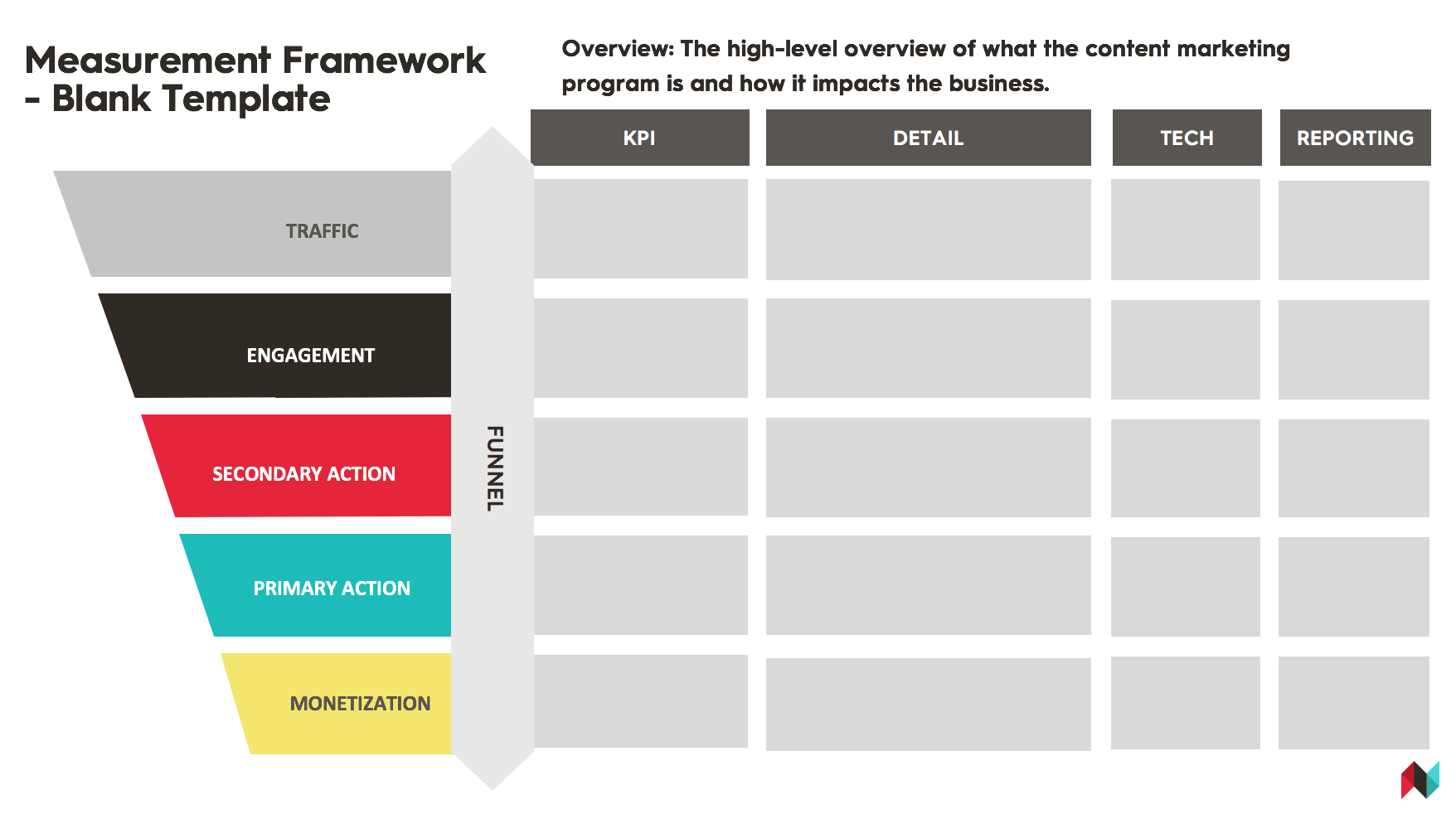How to create a documented content marketing strategy
Here is everything you need to know to create a solid, documented content strategy to help boost your marketing plan and make it more successful.

If you’re new to content marketing, get ready to hear the phrase: “Marketers with a documented content marketing strategy are five times more likely to succeed.”
And if you’re a content marketing veteran, you might be thinking: “I’ve heard this a million times, but what does it actually mean? I know what I want to accomplish, but how will writing down my strategy actually help me?”
The short answer: Having a documented content strategy will help you work smarter, more efficiently, and more effectively.
The very act of documenting your content strategy aligns you and your stakeholders. You’ll define your content marketing goals, the steps you’ll take to reach them, and how you’ll measure success. A good content strategy addresses your business challenges and how you’ll leverage content to solve them.
In fact, creating a documented content marketing strategy is so important that it’s the very first step of the NewsCred Methodology, our proven playbook for content marketing success.
Because there are hundreds (if not thousands) of factors to consider when creating or refining a content marketing program, this guide will take you through some of the most important elements. You’ll learn how to organize your ideas on what your content marketing program should be, and how to package those items into a comprehensive, content strategy document around which you can rally and align your team.
Follow along with this editable content strategy sample template that you can fill out as you read.
Key Elements of a Documented Content Strategy
Use this framework to develop the key elements of your content marketing plan. In doing so, you’ll create a document that’s robust enough to guide your actions and help you respond to challenges.
Define business objectives and content marketing KPIs
“Why are you doing content marketing? What are you hoping to achieve?”
People will be asking these questions before they even open your content strategy document, so it’s key to dedicate your first few pages to answering those questions.
In this section, define your content marketing mission and goals. Include the problems you’re looking to solve with content marketing, and why now is the right time. Determine what success looks like and what KPIs you’ll measure. Rally all the stakeholders involved with your content strategy to agree on common definitions and points of view. You need to align on the relative strengths and weaknesses of your business before you can embark on fixing them.
Some questions to answer in this section include:
- What are your content marketing goals?
- What is the purpose of doing content marketing for your brand? (If you want some inspiration, check out this video by Simon Sinek.)
- How will you determine content marketing success?
- What are the metrics and KPIs you’ll measure?
Identify the target audience for your content strategy
Next question: How do you know content marketing will help your customers? What information do you have to back up that this is going to work?
In this section of your content strategy, compile information about your audience in a way that will resonate with your stakeholders.
To define your audience, take keyword, demographic, and customer data into consideration as you determine insights that will help you create content that drives action. Use these insights to treat your audience segments like humans, not personas. These are people with unique challenges and goals, so how will knowing more about them help you create content that answers questions and solves their problems?
(Download our content marketing sample plan here.)
Start your content marketing strategy planning
By now, you’ve defined how content marketing will help your business move forward. You have gone through all the research and analyzed pertinent data to identify who your audience is and how content will help them achieve their goals (while simultaneously helping your brand).
Now it’s time to plan for actually creating high-quality content at a regular cadence. Start by answering these two questions: What are we going to talk about? and Who is actually going to create the content?
Decide on content topics
As a brand, you have to carefully select the conversations you’ll have with your readers.
At NewsCred, for example, we choose to own the conversation about content marketing. We think it’s fair to have an opinion on the topic because we are a company that specializes in content marketing. Conversely, for example, we do not want to own telling marketers the best outfits for their first interview. This conversation, while it may be important to our audience, goes outside of the value we can provide; it puts NewsCred in the same category as fashion publishers, retailers, and career coaches, rather than marketing leaders.
In this vein, it’s important to consider the topics your brand wants to engage in, where you have the right to an opinion that adds value to the discourse.
Once you’ve defined topics you think your brand can and should provide a perspective on, then you can start to create an organizational hierarchy of topics that can be grouped together. 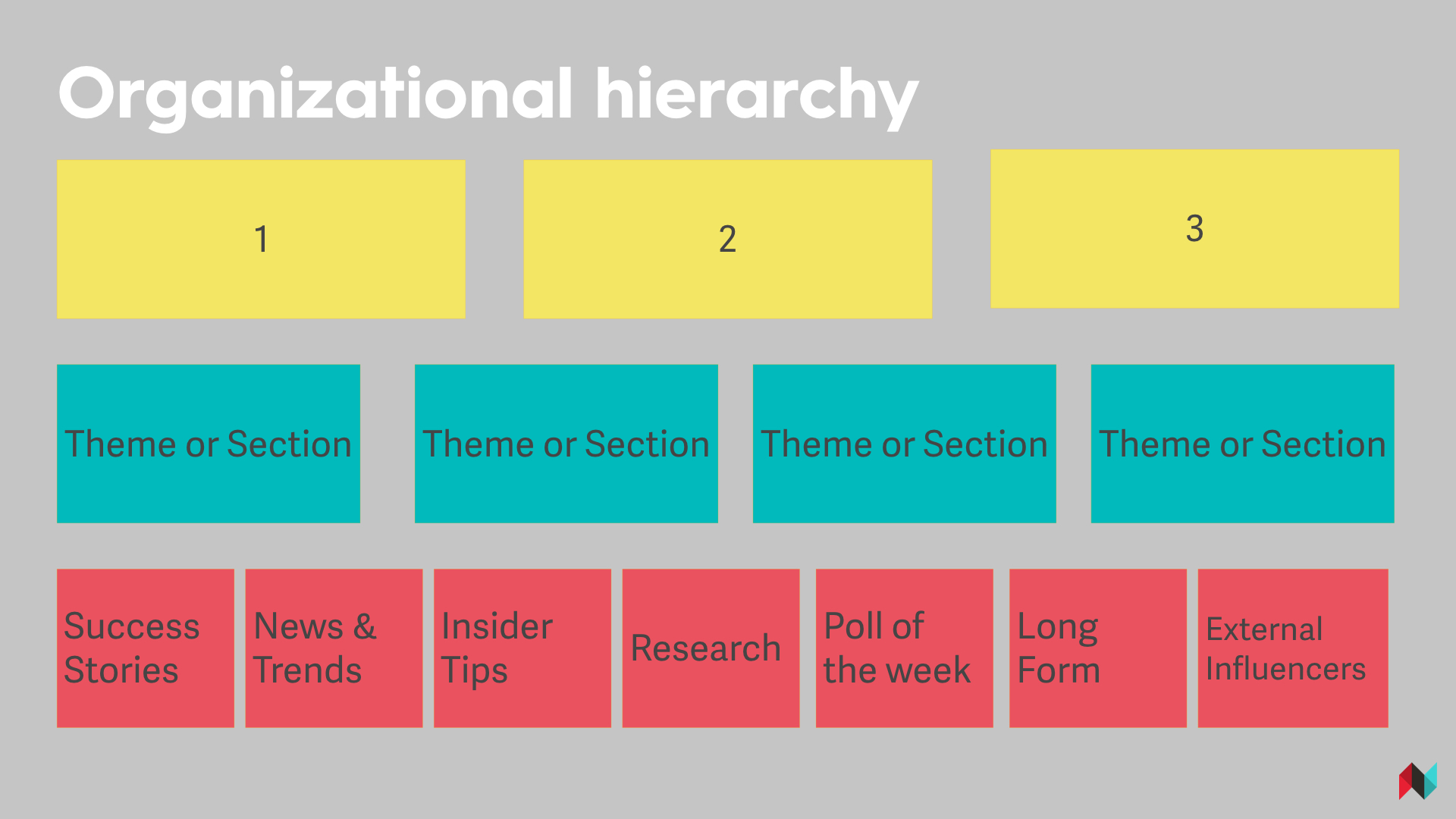
From this, you can create content pillars and sub pillars. This hierarchy may serve as the navigation for your content hub or your method of internal tagging that allows you to easily find and index content.
Now you have topics ranked on importance and grouped based on their relevancy and relation to each other. So what will the content you create look like?
Consider the formats you are going to publish. Curating 10 pieces of licensed content, producing four videos, and writing two original articles, for example, will take considerable resources. In your strategy document, communicate the value of each format, as well as relative goals for how and when you will utilize each format. Your content strategy should show the way each format will fit into a cascading strategy that tackles a “big rock” challenge (i.e. a topic that’s very important to your audience and core to your brand).
See the chart below for taking ad hoc content creation and formats into a structure that will allow you to scale content and provide a ripple effect of value:
Decide on responsibilities
Your editorial ideas are only as strong as the resources allocated to executing them. It’s imperative to walk through roles and responsibilities, as well as the process your team needs to follow to ensure everything is thought through before you publish content. Here are some roles and responsibilities to consider and document in your content strategy:
(Download our content marketing planning template here.)
Some common issues we often see when brands are looking to develop the right roles and responsibilities to enforce workflows are:
- Not having a software solution to ensure accountability and rigor.
- Not having stakeholder buy-in with the process or agreement around the timeframe and process for delivery/approval/amends.
- Lack of beta testing the workflow to ensure the process works and will allow for feedback to ensure it’s sustainable.
- Not considering whether local markets are comfortable with the global priorities and processes for localization and publication.
Address key concerns with your process and workflows in this section of your content strategy, and be sure to provide potential mitigation plans as issues arise.
Create exceptional content
How do you create incredible content?
You have the general topics and conversations you want to own, and you know who needs to be involved – but how do you translate that into real articles and headlines, videos and SlideShares?
The best way to start is with a brainstorm – operate like a great publisher and gather your most creative folks who understand your customers, and come up with headline ideas. When you have a list of potential headlines and formats, slot them into your organized content hierarchy: Can this idea be a “big rock” that you break down into smaller chunks?
When you are creating ideas to tie to topics and formats, think of the guidelines to which you want your creators to adhere. This means following or creating editorial guidelines for style, tone, voice, citations, and other key elements that relate to your company and business. If there are compliance or legal issues you want them to stay away from, be sure to highlight them. In addition, consider creating a content scorecard to ensure that every piece you publish is up to your standards. Think of your editorial guidelines as the ingredients in a cookbook – you want to trust your writers to create your recipe for on-brand content again and again – so give them the tools to do so with comprehensive guidelines.
Use an editorial calendar
When you have all of the above, start to piece them into an editorial calendar which will provide you a timeline for when content will go out to your audience. In your calendar, some elements you might want to consider for each piece of content could be:
- Article headline
- Images
- Content pillar
- Internal tags you will associate with the piece
- Format
- Source (licensed, original)
- Evergreen or seasonal
- CTA
- KPI to measure success
(Download our content marketing strategy template here.)
Distribute your content
At NewsCred, we believe it’s essential for our clients to create a content distribution strategy that considers the relative strengths and weaknesses of paid, owned, and earned channels – because even if you have the best content in the world, no one will find it if you don’t have a strong distribution plan in place.
Create initial plans for the best channels for your content and the objectives against each.
If you are using paid media, be sure to provide an explanation of where this budget will come from, and why you will use it to effectively distribute content. If you’re running a media test, document the metrics you will provide at the end; in doing so, you will justify the spend to those reading your strategy.
Measure KPIs
Even though this is the final chapter of your content strategy, it’s the most important one.
Measuring ROI cannot be an afterthought. This is the only way you will know whether your content marketing efforts are actually helping to achieve your goals. It’s also the only way you’ll retain executive buy-in and budget for your program.
At NewsCred, we recommend completing a Measurement Framework. This one-page roadmap is aligned with the NewsCred Methodology and helps you track content marketing KPIs at every stage of the funnel. It also helps you identify technologies and dependencies for tracking those KPIs.
(Download our content marketing strategy template here.)
As you track your KPIs, glean insights and make optimizations that get more of your target audience to engage with the right content that will eventually drive them towards profitable business action. You need everything we established earlier for this process to work: Traffic coming to your site via distribution channels, a decent-sized library of high-quality content that will provide value to your readers. You also need to have a content hub that is optimized for driving action – this means calls-to-action and newsletter subscription buttons. Your UX affects site performance, so make sure that actions are available throughout the reader journey – there should be no dead ends. It’s already hard to get people to come to your site and read content; if they get that far, and you lose them because your site is not directing them to your next action, you are losing the attention of a potential client.
